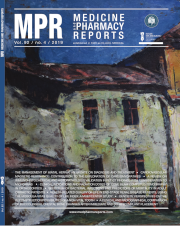Clinical indications and radiation doses of cone beam computed tomography in orthodontics
DOI:
https://doi.org/10.15386/mpr-1434Keywords:
cone beam computed tomography, ionizing radiation, dosimetry, orthodontics, pediatric populationAbstract
Cone beam computed tomography can be used in pediatric population when a tridimensional analysis of dental and maxillofacial bone structures is required. Even though CBCT is considered a low dose radiological examination, ionizing radiation is a known human carcinogenic factor. Furthermore, biological effects are more important in young patients because of their higher radiosensitivity. Orthodontic treatment is typically initiated at young ages and the most common radiographs at this age are dental. This makes it important to quantify the effects of diagnostic radiographs, in particular of CBCT, due to the fact that the radiation doses are higher compared to conventional radiological methods. So far, the carcinogenic response after low dose radiation exposure is not fully understood in the scientific literature. The aim of our review was to emphasize the main indications of CBCT in orthodontics and to evaluate the radiation doses and potential risks of CBCT irradiation of pediatric patients
Downloads
Published
How to Cite
Issue
Section
License
The authors are required to transfer the copyright of the published paper to the journal. This is done by agreeing to sign the Copyright Assignment Form. Whenever the case, authors are also required to send permissions to reproduce material (such as illustrations) from the copyright holder.

The papers published in the journal are licensed under a Creative Commons Attribution-NonCommercial-NoDerivatives 4.0 International License.

